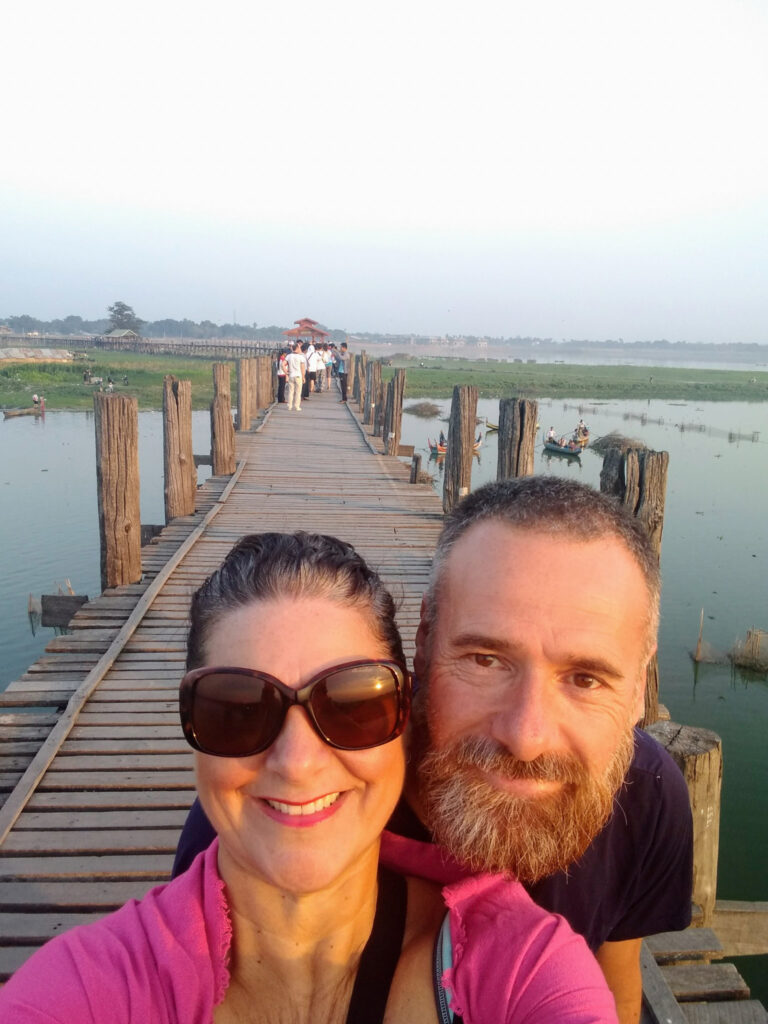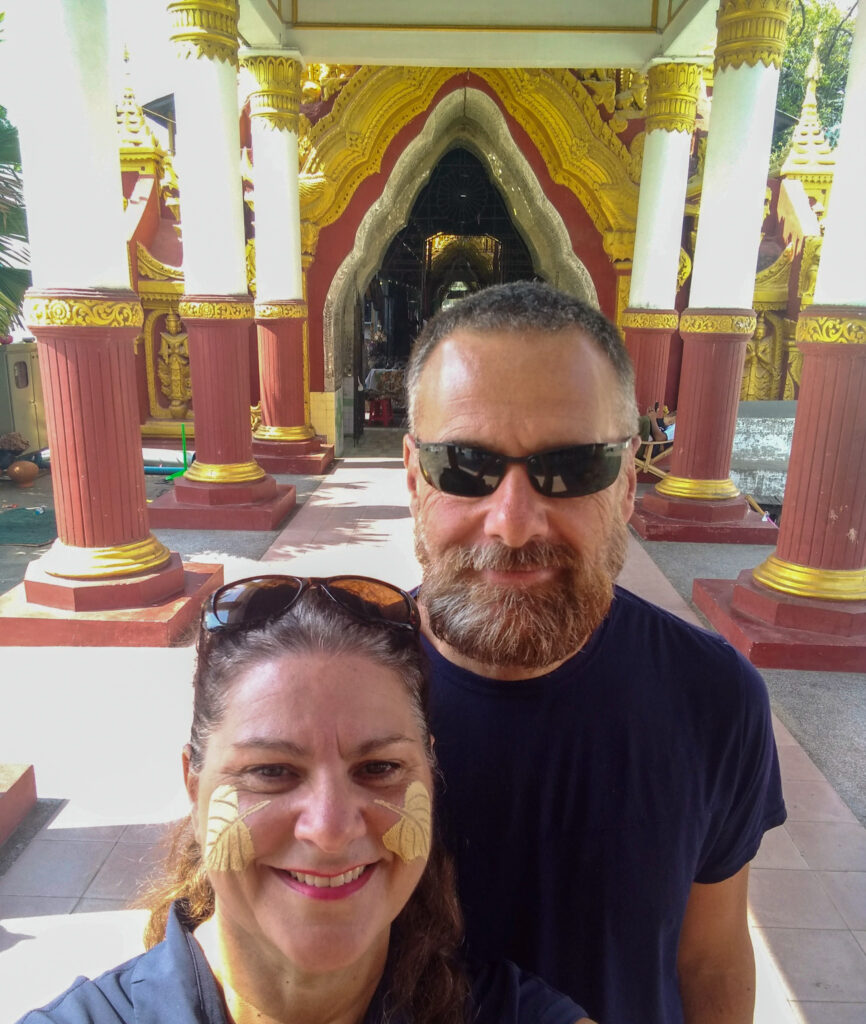“On the road to Mandalay”.

See photos
Where is Mandalay?
The city of Mandalay is located in the centre of Myanmar, on the east bank of the Irrawaddy River. In 1857 King Mindon founded the new royal capital of Mandalay. For 28 years it was the royal capital of the Konbaung Dynasty.
The last independent Burmese kingdom before its annexation to the British Empire in 1885. Mandalay remained under British colonial rule until 1948, except during World War II, when the city was under Japanese occupation from May 1942 to March 1945.
After the country gained independence from Britain in 1948, Mandalay remained the main cultural, educational, and economic hub of Upper Burma. From 1980 to 2010 the city endured 4 major devastating fires, which collectively destroyed over 9,000 buildings and left over 60,000 people homeless. Ethnic Han-Chinese purchased lands ravaged by the fires and now make up approximately 50% of the city’s population.
Chinese festivals are now embedded in the city’s cultural calendar. It has been said that Mandalay is becoming little more than a satellite of China, with the British colonial romance of old Mandalay long gone.
Getting there
Our journey from Imphal to Mandalay was on the overnight bus.
Our accommodation
During our time in Mandalay, we chose to stay at the Hotel Yadanarbon booked through Booking.com. This hotel is conveniently located within the city. With quick and easy access to many local points of interest and to the city’s must-see destinations.
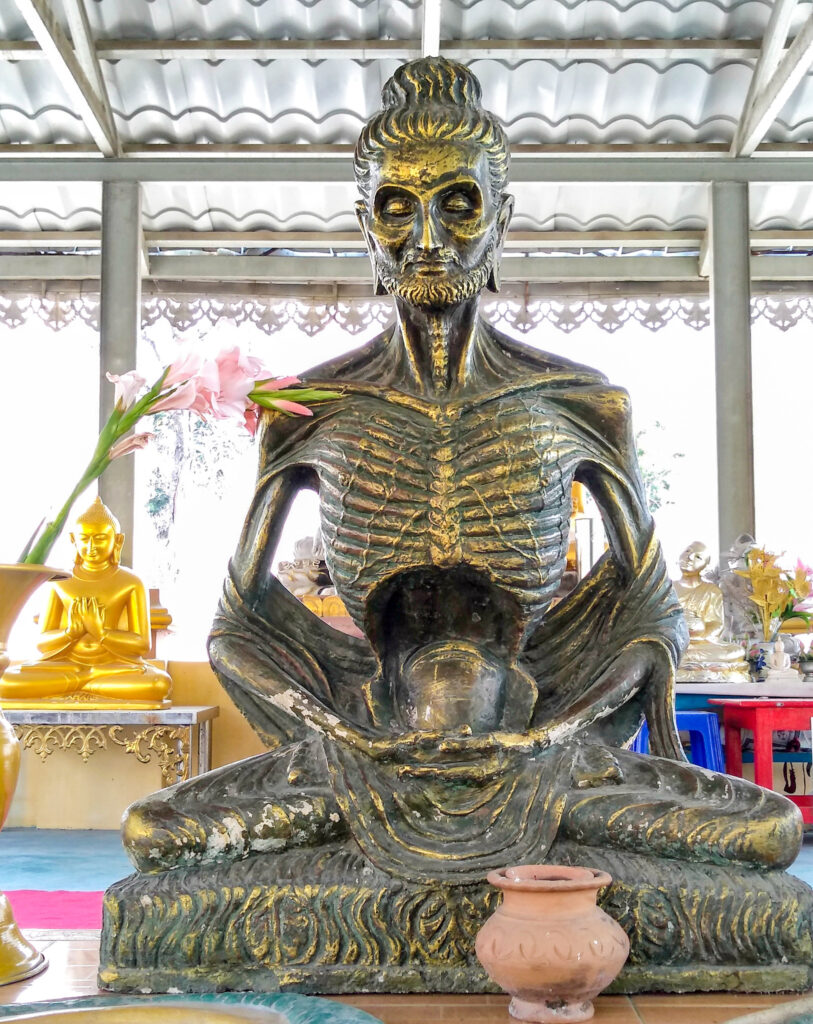
Our room was spacious and clean, with an ensuite bathroom which had a bath and over bath shower. Air conditioning, a TV, tea, and coffee making facilities and bathrobes were all within the room.
An elegantly decorated rooftop restaurant offered different varieties of local and international cuisines. With a traditional puppet show every night, providing light entertainment whilst dining.
The rooftop cold water infinity pool offers magnificent panoramic views of the city and beyond. It is a great place to relax and unwind with a drink after a long hot day sightseeing, getting quite popular at sunset.
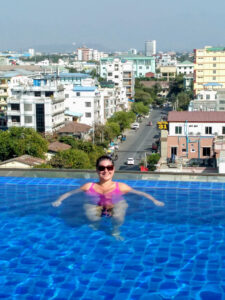
Places of interest
U Bein Bridge
Located about 11 km south of Mandalay in Amarapura is U Bein Bridge. Believed to be the oldest and longest wooden teak bridge in the world.

In 1857 the local mayor (whose name was U Bein) salvaged pieces of wood from the dismantled teak palace in Inwa. Using them to make this magnificent bridge. Also known as Taung Tha Man Bridge, it is 1,209m in length and crosses the Taung Tha Man Lake.


Constructed of 1,086 pillars, some have now been replaced with concrete owing to decay. There are four wooden pavilions sighted equidistant across it and the bridge largely remains intact.
In some places, it can actually be felt wobbling as you walk on it. For those of a nervous disposition, there are no handrails along its length and some of the planks underfoot are loose.
During the dry season when the lake is low, the bridge is quite tall, but after the wet season, when the lake is full, the water level is just below the foot planks of the bridge. Making it not such a scary walk. There is no charge to walk across the bridge.

Mandalay Palace
In the centre of the city is Mandalay Palace, whose formal name in Burmese is Mya Nan San Kyaw (The Famed Royal Emerald Palace). Also, it is known as the Great Golden Royal Palace.
A huge walled palace, each of its four walls being 2 km long, in front of which there is a 64m wide moat, dating from the Konbaung Dynasty.

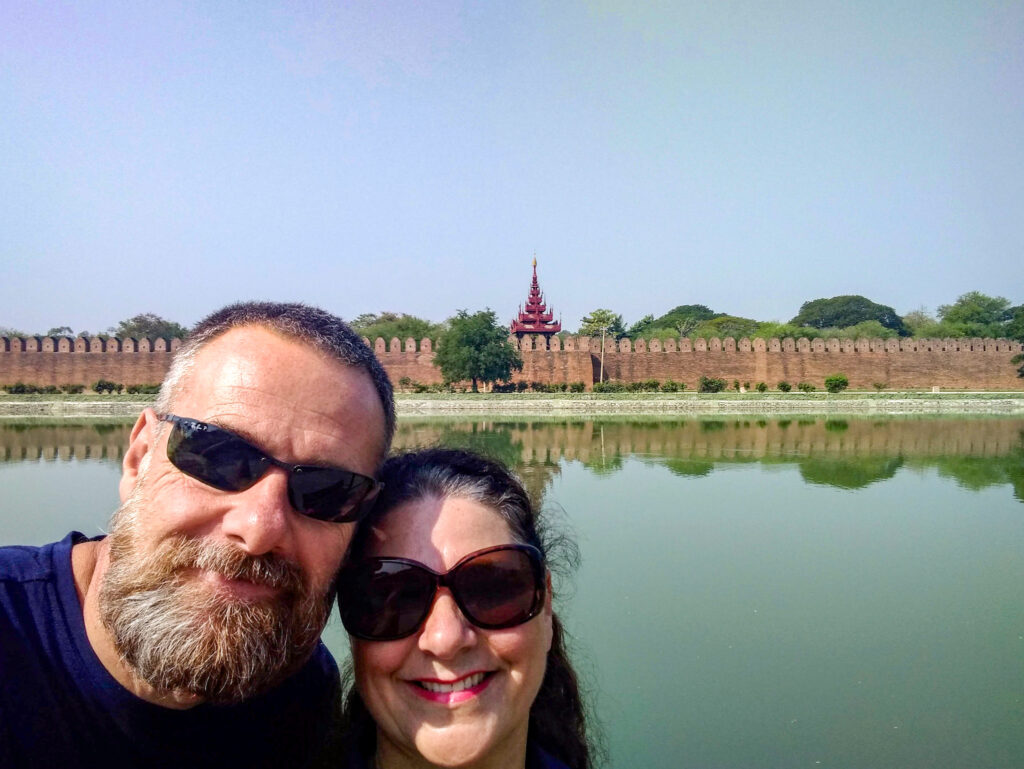
Overview
After the Second Anglo-Burmese War of 1852. The diminished Burmese kingdom had few resources to build an ostentatious palace so in 1857 the former royal palace at Amarapura was dismantled and moved by elephants to its new location.
When the British invaded in 1885 the palace was ransacked and the royal library burned down. The royal regalia of Burma was removed and went on display in the V & A Museum, London. Being returned to Burma in 1964 as a gesture of goodwill. During World War II, the palace was turned into a supply depot by the occupying Japanese.
Sadly the splendid teak palace was largely destroyed during the war. It is not clear if it was done by Allied bombing or the Japanese. But only the royal mint and the watchtower survived.
Reconstruction of the palace began in 1989. While the overall design was true to the original. The reconstruction process incorporated both traditional and modern building techniques. Corrugated sheet metal was used for the roofing of most buildings. Concrete being extensively used as opposed to teak used in the original palace.
Entry
Tourists are only permitted to enter via the East Gate on 19th Street. No exceptions are made, except for locals, who can enter the site from any gate. Foreign nationals require identification to enter, as it is classified as a restricted area. Bear in mind that each of the perimeter walls are 2 km long, so if you go to the wrong gate, it’s a long walk to the right one.
Cost
Entry costs 10000 Kyat per person, but that is for entry into Mandalay zone attractions as well, the ticket being valid for 5 days. It is stamped on each day you visit the palace and it gives access to all of the exhibits. It is almost a further 1 km walk from the entry gate to the palace itself.
Kuthodaw Pagoda
Located at the foot of Mandalay Hill, it was built by King Mingdon in 1857. In the grounds of the pagoda are 729 stone-inscription caves. Each cave contains a marble slab inscribed on both sides with a page of text from the Buddhist scriptures. Making it the world’s largest book.


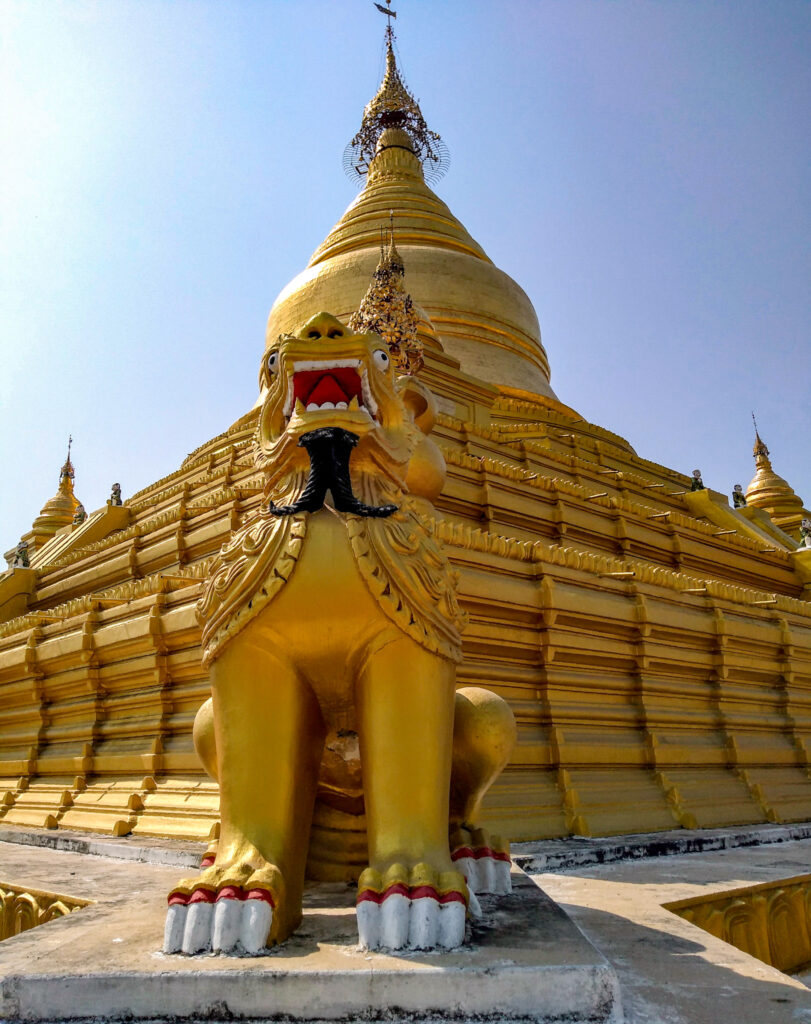

Shwenandaw Monastery
A monastery made entirely out of teak wood with beautiful intricate teak carvings of Buddhist myths. It was originally part of the royal palace and was moved to its current location by King Thibaw in the late 19th century. It is the only building from the original wooden royal palace to have survived the devastating bombing during World War II. It remains the only original authentic part of the royal palace which can still be seen today.
Mandalay Hill
A 240m high hill located to the northeast of the city. Known for its abundance of pagodas and monasteries, it has been a major pilgrimage site for Burmese Buddhists for nearly two centuries. Crowning the hill is the Su Taung Pyae Pagoda.
From the Pagoda there are panoramic views of Mandalay. There are four covered stairways going up the hill. There is also an escalator up to the pagoda. Unfortunately for us, the day we wanted to go up the hill, it was closed.

